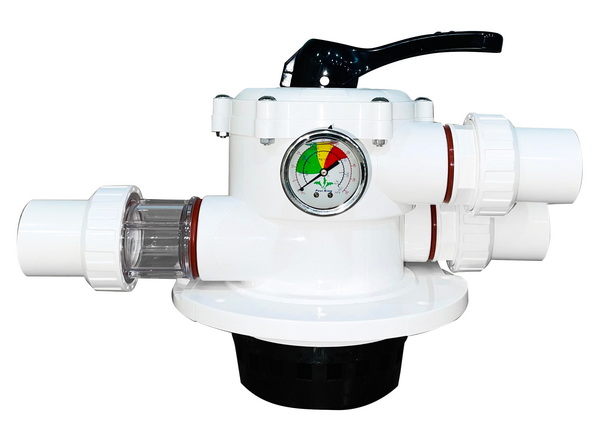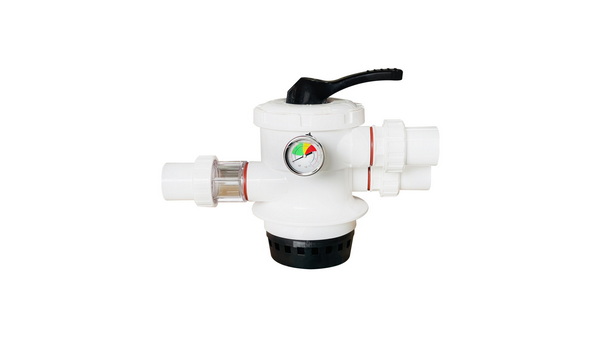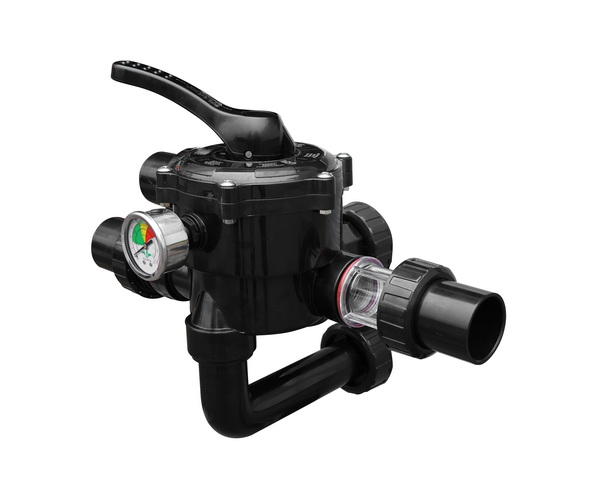Views: 222 Author: Tina Publish Time: 2025-07-12 Origin: Site








Content Menu
● What Is the Role of Copper in Pool Maintenance?
● How Does Copper Affect Algae and Water Quality?
>> The Chemistry of Copper in Pools
● The Practice: Placing Copper Fittings in Pools
>>> How It's Done
● Potential Benefits of Copper Fittings
>> 2. Reduced Chlorine Dependency
>> 3. Antimicrobial Properties
>> 4. Durability in Pool Construction
● Risks and Downsides of Using Copper in Pools
>> 1. Staining
>> 2. Corrosion
>> 5. Ineffectiveness of DIY Methods
● Environmental and Health Considerations
● Alternatives to Copper Fittings for Algae Control
>> 3. Commercial Copper Ionization Systems
● Case Studies and Real-World Experiences
● Maintenance Tips for Pool Owners
● Myths and Misconceptions About Copper in Pools
>> Myth 1: Copper Fittings Alone Can Replace Chlorine
>> Myth 2: More Copper Means Better Results
>> Myth 3: All Green Hair Is Caused by Chlorine
>> Myth 4: DIY Methods Are as Effective as Professional Systems
>> 1. What does copper do in a swimming pool?
>> 2. Can I put copper pipes or fittings in my pool to control algae?
>> 3. What are the risks of having too much copper in pool water?
>> 4. Are there safer alternatives to copper for pool maintenance?
>> 5. How can I remove copper from my pool water?
Swimming pool owners are always seeking effective, affordable, and low-maintenance solutions to keep their pools clean, clear, and free from algae. One method that has gained attention is the use of copper fittings or pipes placed directly in the pool or skimmer basket. This article provides a comprehensive exploration of whether putting copper fittings in your pool truly helps, examining the science, practical outcomes, risks, and alternative solutions. Throughout, you'll find illustrative explanations to enhance understanding, as well as a concluding summary, a concise article abstract, and a set of frequently asked questions with detailed answers.

Copper is a naturally occurring metal known for its antimicrobial and algaecidal properties. For decades, copper-based compounds have been used in swimming pool maintenance, primarily in the form of copper sulfate or chelated copper algaecides. These products are designed to control algae growth and maintain water clarity. Copper ions disrupt the cellular processes of algae, preventing their proliferation.
Modern pool technology has introduced copper ionization systems, which release controlled amounts of copper ions into the water. These systems are engineered to maintain safe copper concentrations, reducing the need for high levels of chlorine and other chemicals.
Historically, copper has been used in water vessels and plumbing for its ability to inhibit the growth of microorganisms. Its effectiveness in swimming pools, however, depends on careful control of water chemistry and copper levels.
Copper is effective at killing and preventing algae. When copper ions are present in the pool water at appropriate concentrations, they interrupt the growth cycle of algae, making it difficult for them to establish and spread. This is why many commercial algaecides list copper as their active ingredient.
However, the effectiveness of copper depends on:
- The concentration of copper ions in the water
- The form of copper (chelated copper is more stable and effective)
- The overall water chemistry, including pH and alkalinity
Copper ions interact with algae cells by binding to proteins and enzymes, disrupting essential biological processes. However, if the pH of the pool water is not properly balanced, copper can precipitate out of solution, reducing its effectiveness and increasing the risk of staining.
For effective algae control, copper concentrations typically need to be maintained between 0.2 and 0.4 parts per million (ppm). Levels above this can lead to staining and other problems, while lower levels may not be effective against algae.
A popular trend, especially on social media platforms, involves placing a piece of copper pipe or fitting in the pool skimmer basket. The idea is that as water flows over the copper, ions are released, helping to control algae.
- A small section of copper pipe or fitting is placed in the skimmer basket.
- Water passes over the copper, slowly dissolving ions into the pool.
While copper does have algaecidal properties, the rate at which copper ions are released from a simple fitting or pipe is extremely slow. For significant algaecidal effect, a much higher concentration of copper ions is typically required than what is released by a single fitting.
- Unpredictable Ion Release: The amount of copper released is inconsistent and difficult to control.
- Lack of Monitoring: Without regular testing, copper levels can easily become too high or too low.
- Risk of Staining: Improper use often leads to surface stains and discoloration.

Copper ions interfere with algae growth, so in theory, adding copper to the pool could help prevent algae blooms.
Copper-based systems can allow for lower chlorine levels, which some swimmers find preferable due to reduced odor and skin irritation.
Copper is known to inhibit the growth of bacteria and other microorganisms, contributing to overall pool hygiene.
Copper is also used in pool construction for its corrosion resistance and aesthetic appeal, especially in luxury pools.
If copper effectively reduces algae, it could reduce the need for expensive algaecides and frequent shock treatments.
One of the most common and frustrating issues with copper in pools is staining. High copper concentrations can cause blue, green, or gray stains on pool surfaces, as well as on swimsuits and even hair.
Copper can corrode in the presence of high chlorine levels and imbalanced pH, leading to equipment damage and increased maintenance costs.
Excess copper in pool water can cause skin and eye irritation, and in rare cases, gastrointestinal distress if ingested.
Copper is toxic to aquatic life. When pool water containing copper is discharged into the environment, it can harm fish and disrupt ecosystems.
A small piece of copper in the skimmer generally does not release enough ions to be effective against algae, making this method unreliable.
Many local health departments regulate the allowable levels of copper in public and private pools. Exceeding these limits can result in fines or required corrective actions.
Copper does not break down or evaporate; it accumulates in the pool water over time. If not carefully monitored, copper levels can exceed safe thresholds, leading to the aforementioned risks.
Many regions have strict guidelines regarding copper levels in recreational water. Pool owners are advised to test water regularly and avoid using unapproved copper sources.
When pool water is drained or backwashed into storm drains, excess copper can enter local waterways. This can be harmful to aquatic organisms and contribute to environmental pollution.
Traditional sanitizers like chlorine and bromine remain the most effective and widely used methods for controlling algae and bacteria in pools.
Ultraviolet and ozone systems provide chemical-free sanitation, reducing the need for both chlorine and copper.
If copper is preferred, professionally designed ionization systems offer controlled dosing and monitoring, minimizing risks.
Routine cleaning, proper filtration, and maintaining balanced water chemistry are the most reliable ways to prevent algae growth.
Some pool owners use enzyme-based products that break down organic contaminants, making it harder for algae to thrive.
Many pool owners who have tried placing copper fittings in their pools report minimal to no improvement in algae control. In some cases, they experienced staining and discoloration, leading to costly remediation.
Pool professionals and chemists consistently advise against DIY copper fitting methods, recommending instead the use of regulated products and systems for safe and effective pool maintenance.
Reputable pool organizations and manufacturers generally discourage the use of copper fittings as a DIY solution, highlighting the risks and lack of proven effectiveness.
- Test Water Regularly: Use a reliable test kit to monitor copper, pH, alkalinity, and sanitizer levels.
- Balance Water Chemistry: Keep pH between 7.2 and 7.8 to minimize corrosion and staining.
- Clean Filters and Surfaces: Regularly clean filters, skimmers, and pool surfaces to prevent algae buildup.
- Follow Manufacturer Guidelines: If using copper-based products, always follow dosing and safety instructions.
- Consult a Professional: Seek advice from pool professionals before making changes to your pool's sanitation system.
Copper can help control algae but does not sanitize pool water as effectively as chlorine or bromine. It does not kill bacteria and viruses as efficiently.
Excess copper can cause staining, health issues, and environmental harm. More is not always better; safe levels must be maintained.
Green hair is often the result of copper in the water, not chlorine. When copper binds to proteins in hair, it can cause a greenish tint.
Commercial ionization systems are engineered for safety and efficiency. DIY copper fittings cannot match their performance or reliability.
Placing copper fittings in your pool or skimmer basket is not a recommended or effective method for controlling algae or maintaining water quality. While copper does possess natural algaecidal and antimicrobial properties, the slow and unpredictable release of ions from a simple fitting is insufficient for meaningful pool sanitation. Furthermore, the risks of staining, equipment corrosion, health concerns, and environmental harm far outweigh any potential benefits.
For those seeking the advantages of copper, professionally designed ionization systems offer a safer and more effective solution. However, the gold standard for pool maintenance remains regular cleaning, proper filtration, and balanced water chemistry using approved products.

Copper acts as an algaecide, disrupting the growth and reproduction of algae. It is used in some commercial algaecides and ionization systems to help keep pool water clear.
Placing copper fittings in your pool or skimmer basket is not effective for algae control. The release of copper ions is too slow and unpredictable, and it can cause staining and other issues.
Excess copper can lead to blue, green, or gray stains on pool surfaces, discoloration of hair and swimsuits, equipment corrosion, and potential health and environmental hazards.
Yes. Regular use of chlorine or bromine, UV or ozone systems, and commercial copper ionization systems (with proper monitoring) are safer and more effective alternatives.
The most effective way to remove copper is to drain and refill the pool with fresh water. Metal sequestrants can help prevent staining, but do not remove copper from the water.
